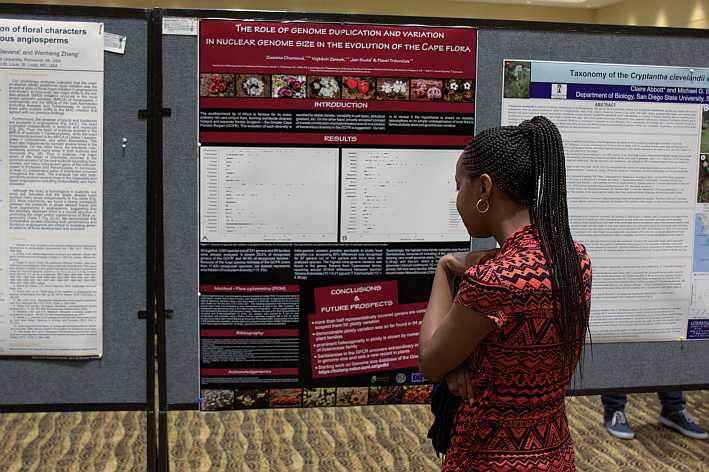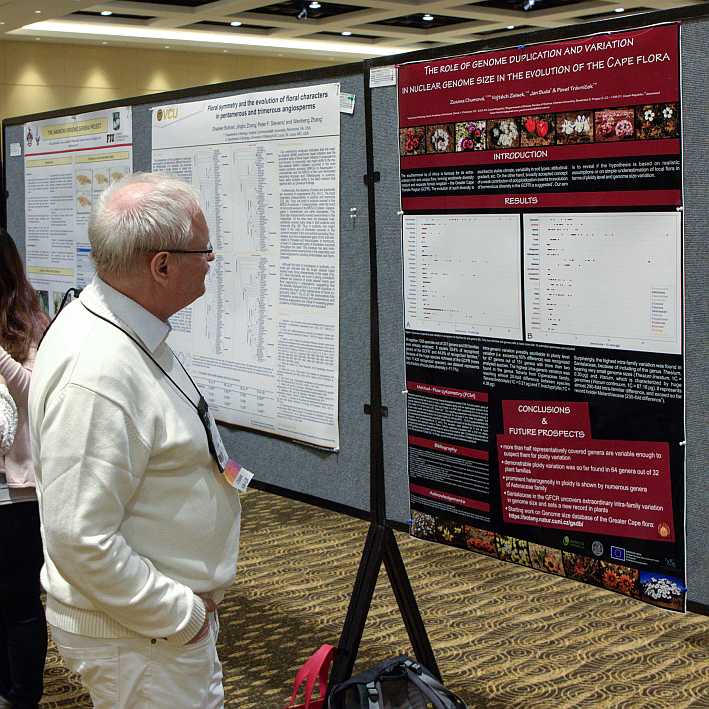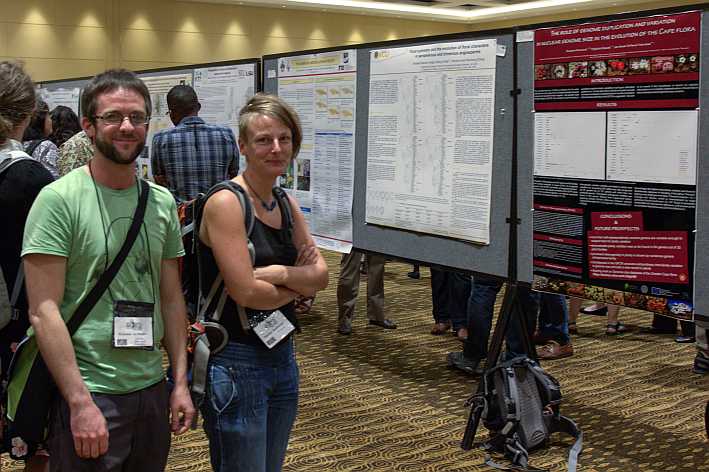Poster presentation on Botany 2018, annual conference of the Botanical Society of America in Rochester, Minnesota, USA (July 21-25).

Genomes represent a distinct and legitimate level of biological organization within cells, having their own unique evolutionary histories and with genome size (GS) as one of their inherent properties. One feature that has long puzzled researchers measuring nuclear GS is the tremendous variation encountered in many different groups of organisms. This project aims to fill the knowledge gap regarding the GS and ploidy diversity across one of the most species- and endemic-rich floras of the world — Cape Floristic Region (CFR; it has nearly 9400 species of which approximately 68% are endemic). It is relatively well-explored in comparison with other world hotspots, with available data on species distribution, phylogeny, ecological preferences, functional traits and/or biotic interactions. Currently, representative GS data are available only for a few Cape genera (e.g. Agapanthus, Eucomis, Gasteria, Nerine, Oxalis), while the great majority of Cape groups remain unexplored. Therefore, we want to unravel the extent of ploidy and genome size variation across the Cape flora and assess the evolutionary role of genome-wide processes (genome duplication, genome down-/up-sizing) in the genesis of the Cape hyperdiversity. In particular, we are determining holoploid genome sizes and AT/GC contents in a representative set of Cape plants using DNA flow cytometry. We are developing a public online database, which will store all available GS data of Cape plants and will serve as a primary source of GS values for this biodiversity hotspot. Around 1000 species have already been subjected to flow cytometric analyses by our team using both intercalating (to estimate GS in absolute units) and AT-selective (to determine the proportion of AT/GC bases) fluorochromes. Our goal is to fill the database not only by GS data, but also by chromosome counts and exact information of investigated individuals, including georeferenced locality, high-resolution scan of preserved herbarium vouchers, etc. The database should provides fundamental source of unequivocal and easily checked data on incidence, frequency and distribution of taxa with ploidy heterogeneity and genome size variation. Meta-analyses of such data will shed new light into extent of polyploid speciation in CFR.

Presentation of the poster during poster session.

